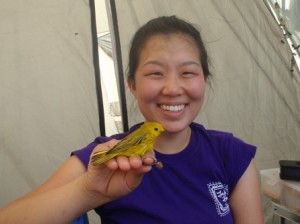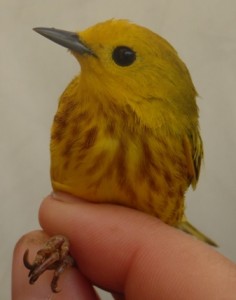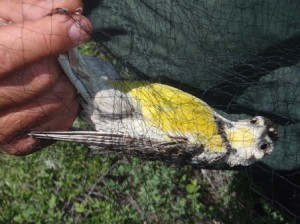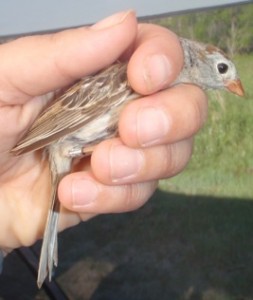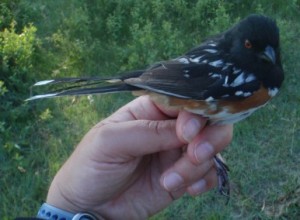The area where we are banding birds is along a creek surrounded by shortgrass prairie. Some of the birds we catch are associated with the riparian vegetation (growing along streams) and some are associated with the grasslands. We are interesting in knowing the numbers of species breeding in the area (diversity) and the well as the number of breeding birds (productivity). Yellow warblers often breed in riparian areas.
For each bird we catch, we note the species and sex if we can. If it is a female we look for a brood patch (a vascularized area of skin that they use to keep the egg warm). If it is a male we look for a ‘cloacal protuberance.’ We are interested in knowing the timing of breeding and the number of breeding birds and the overall body condition of the birds (weight, fat, feather wear).
This young meadowlark probably left the nest a few days before we caught it in the net. The birds sit calmly in the pocket of the net. They may look really tangled but they usually can be removed easily and quickly.
The most important thing that we do is put a metal band on the bird with a unique number. That way, if we catch it again, we can keep track of how its measurements change. We can find out how long they live and, if they are caught elsewhere, we find out where they spend their winters and what migratory paths they use.
This beautiful male spotted towhee probably had a nest nearby.

